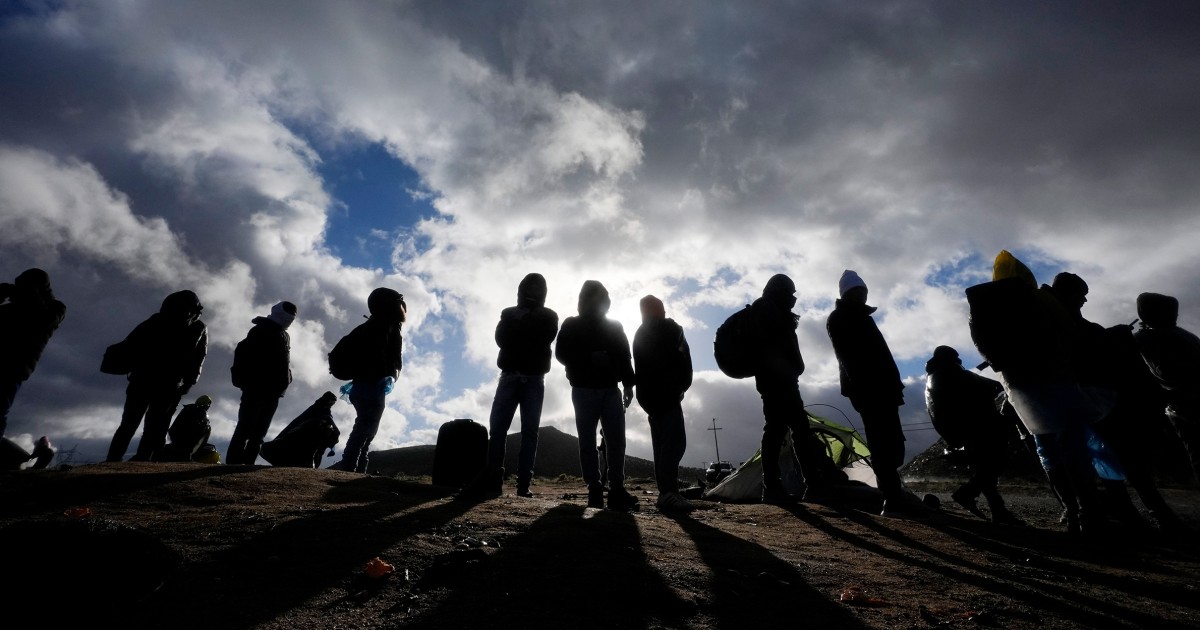This Peruvian is an example of entrepreneurship for Latinos 1:16
(CNN) --
Immigration has long been a political soccer ball in the United States.
But if you're wondering why the country's labor shortage persists nearly three years after the Covid-19 pandemic, it's partly because it doesn't have enough immigrants.
Immigrants are vital to the US economy and fill thousands of jobs at home, jobs many Americans don't want to do.
In 2020, legal immigrant worker visa processing was halted and only resumed in late 2021.
Thanks to immigrants: New numbers show how US cities with more foreigners fare better
And by the end of last year there were about 2 million fewer working-age immigrants in the United States than there would have been if pre-pandemic immigration had continued unchanged, according to new research from the University of California, Davis.
The moving story of an immigrant about her arrival in the US 2:21
“Part of the reason why there are so many vacancies and unfilled jobs in the US is that we are missing a lot of immigrants who were coming regularly before covid,” said Giovanni Peri, author of the research and director of the Center for Global Migration at UC Davis.
The immigration debate has been reignited by an increase in the US-Mexico border.
In March 2020, President Trump invoked Title 42, a law enacted during the pandemic to prevent the spread of covid-19, which has kept immigrants and potential asylum seekers out of the country.
Asylum seekers can legally work in the United States while they wait for their cases to be resolved.
During that waiting period, asylum seekers can apply for work permits, a process that typically takes 180 days before they are authorized.
advertising
But the decline in legal immigration in the past two years has hurt American businesses.
Especially in industries that require less qualified labor: construction, agriculture and hospitality.
“We don't make up for the losses unless we really change the immigration laws and allow more people to come in every year,” Peri said.
“The way that we are catching up is that we are processing visas at the speed that was done before covid.
So for a while there will be this gap."
The lack of available workers has pushed up wages, leading to higher inflation.
Federal Reserve Chairman Jerome Powell said that in addition to an aging workforce, there is a lack of foreign labor contributing to labor shortages.
States with inclusive policies for immigrants: driver's licenses, education and health
“The combination of a drop in net immigration and an increase in deaths during the pandemic probably accounts for about 1.5 million missing workers,” Jerome Powell, the Federal Reserve chairman, said last month.
The 'big shock'
The greatest impact occurs in industries such as construction, agriculture and, especially, hospitality, which depend on immigrant workers.
Those kinds of industries had higher job vacancy rates last year, adding to existing labor shortages, according to UC Davis research.
There are currently 10.3 million jobs open in the US: 377,000 in construction and 1.6 million in hospitality.
That number has been on the rise in recent months.
“The hospitality [sector] was employing a lot of immigrants, 30%-40% of the workforce in that sector was foreign born.
And so you're missing out on a lot of them, and potentially that's a huge impact,” Peri said.
USA: applications for legal residence increase after the pandemic 3:05
The restaurant industry has been the hardest hit by the drop in immigration.
Slower service, restaurants closed for lunch, higher prices are the result of labor shortages.
And the restaurant industry is on track to grow 14% over the next decade, while the US-born workforce is expected to grow just 10%, according to the National Restaurant Association.
There will be more restaurant jobs than the American workforce can fill.
60% of restaurant operators face staff shortages that limit their operational capacity, according to the National Restaurant Association.
But new legislation, “The Essential Workers for Economic Advancement Act,” was introduced in the House of Representatives earlier this year.
The law would create a new visa program for workers in industries like hospitality.
“Immigration reform is an economic necessity for the restaurant industry,” said Sean Kennedy, Executive Vice President of Public Affairs for the National Restaurant Association.
"Allowing more legal immigration would be beneficial to employers who desperately need employees and people who are looking for new opportunities."
“Skilled” workers
About 1 million of the 2 million potential immigrants lost during the pandemic were college-educated, according to UC Davis research.
These workers would be considered "highly skilled workers" who could come to the US on special H-1B visas.
The Academy of Sciences urges bringing more qualified immigrants to the US to protect the country's scientific achievements
Those highly skilled workers are job multipliers.
For every highly skilled worker, an additional 2.5 jobs are created, according to a UC Berkeley report.
“Highly skilled immigration is incredibly important,” said Adam Ozimek, chief economist at the Economic Innovation Group.
"We shouldn't think of it as something that addresses scarcity in the short term, although it can help, but something that is really important in the long term: innovation, productivity, growth, and the health of the economy."
Earlier this month, the American Federation of Farm Bureaus, along with 350 other farm groups, called on the Senate to pass a farm reform bill already passed by the House to address the farm labor crisis.
Skilled foreign farm workers are the backbone of US agriculture and are traditionally in the country on seasonal H-2A visas, which posted their highest utilization rate this year, according to the Farm Bureau.
But many in agriculture say it's not enough and still can't find workers.
“The farm labor crisis is hampering production and contributing to food price inflation.
We must address this jobs crisis that threatens America's farms so our producers can continue to feed, clothe and feed our nation," the letter to Senate leaders said.
But, according to the Department of Labor, 317,000 temporary H-2A jobs were certified last year, more than six times the number in 2005. But only 80% of those certified jobs resulted in a visa.








